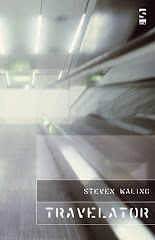I watched a weekend of Arts TV on BBC 4 this weekend: old issues of Arena, Omnibus and Monitor; interviews with Henry Moore, Orson Welles, and a wonderfully oddball programme about Pop Art directed by Ken Russell. A programme about Picasso, an edition of Civilisation, and the wonderful Ways of Seeing with John Berger.
In it, the sadly neglected figure of Pauline Boty was featured, showing some of her collages, and she helped me to complete a painting I've been doing for ages, by incorporating some collage. I don't paint much, and it takes me ages to see where the painting is going; so that was an evening well spent. Thank you BBC.
Collage, I suspect, is pretty much the twentieth century art form. That, and its sculptural equivalent, assemblage, seems to be what the art world does best these days: disparate elements drawn in to make something new. (The turner prize is full of assemblage and collage, and very little straight painting.) From Ernst's collages made from old etchings down even to Tracey Emin's Bed, art these days has more to do with picking up the bits and pieces from life and putting them together, not into an order, so much as a jigsaw of pieces missing, and pieces from other jigsaws. It doesn't make much sense, because it can't make much sense, because our lives are often cobbled together from disparate elements. A bit of religion or anti-religion, a bit of politics, a bit of New Age, a curiously reactionary bit there; it's not exactly a fully-worked through philosophy, more a kind of smorgasbord of found ideas.
Poetry's version of the collage is the cut-up, or it could be these days, flarf. It makes a new set of relations from the materials we make. Sometimes, we collage our own writing when we make one poem out of more than one; or we collage our experience when we don't write about one thing but about many at the same time. Simultaneity, as Appollinaire might have put it, is everywhere. We flip channels; in fact, perhaps the most potent symbol of the late twentieth/early twenty-first century could well be the TV remote and the set-top box.
Mother Mary
1 week ago

No comments:
Post a Comment